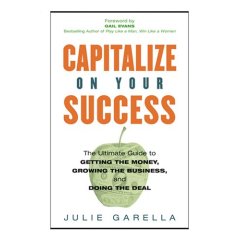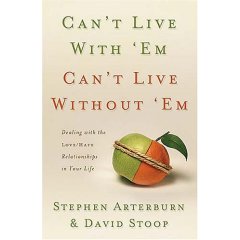The best interval workout seems to consist of 20 seconds of sprinting followed by 10 seconds of rest; repeat 7 or 8 times. These are often called "Tabata intervals," after a Japanese scientist who headed up several studies on humans and rats. His studies showed, among other things, that these intervals increased both anaerobic capacity and aerobic capacity more than an hour a day of more moderate exercise, and that a short bout of sprints was effective at burning fat or at increasing glucose transport (particularly helpful for diabetics). Some people use the same principle for any number of other workouts -- such as push-ups -- rather than a literal sprint.
I tried the Tabata interval workout today. The good part is that it was over very quickly. But it was one of the most intense workouts I've ever had, and I'm already sore right now, before the day is done (I almost never get sore from my running any more -- not from a relatively hard hill workout, not from longer intervals (such as 10 intervals of .4-.5 mile at about a 6:15 pace), etc.).
Here's a run-down of Tabata's studies:
1. Tabata I, Nishimura K, Kouzaki M, Hirai Y, Ogita F, Miyachi M, Yamamoto K., "
Effects of moderate-intensity endurance and high-intensity intermittent training on anaerobic capacity and VO2max," Med Sci Sports Exerc., 28 vol. 10 (Oct. 1996):1327-30. This study consisted of six weeks of training. In one group, people cycled for 60 minutes a day at a modest pace. That group did not increase anaerobic capacity, and VO2 max increased by about 5 ml/kg/min. The other group did 7 or 8 sprints on the cycle with a 10-second rest in between.
For them, anaerobic capacity increased by 28%, and aerobic capacity (or VO2 max) increased by MORE than the first group: 7 ml/kg/min.In short, 4 minutes of an intense sprint workout did more than an hour-long workout. Tabata
has reportedly said that "the rate of increase in VO2max is one of the highest ever reported in exercise science."
2. Tabata I, Irisawa K, Kouzaki M, Nishimura K, Ogita F, Miyachi M., "
Metabolic profile of high intensity intermittent exercises," Med Sci Sports Exerc., 29 vol. 3 (Mar. 1997):390-95. This study compared two types of interval workouts. Number One consisted of 20 seconds of sprints and 10 seconds of rest. Number Two consisted of 4 to 5 intervals of 30 seconds with 2 minutes of rest. The study looked at how hard each type of interval taxed the person. Number One sent people into a much higher oxygen deficit, and a similar peak oxygen uptake (as percentage of VO2 max). What this means is that Tabata intervals "may tax both the anaerobic and aerobic energy releasing systems almost maximally."
As
this article explained:
The reason subjects didn't reach their anaerobic capacity on I2, even though they did more work, is due to the differences in the rest periods used. During each bout, phosphocreatine (PCr) is broken down, oxygen stores used up and lactate is produced from anaerobic glycolysis. During a two-minute rest period, as on I2, oxygen stores in the muscles can be replenished and the PCr stores used during each bout will be significantly recovered. Therefore the oxygen store and PCr contribution to each bout in I2 will be high. Because of this, more work can be done until lactate reaches the level whereby the subject cannot continue. In addition, although more TOTAL anaerobic work is done on I2, a two-minute recovery time allows the aerobic system to contribute more. Thus, PROPORTIONATELY less anaerobic work is performed and so the subjects do not reach anaerobic capacity.
In contrast, the rest intervals in I1 are very short. Therefore the PCr and O2 contribution will be insignificant after the first or second bout, as little oxygen and PCr store recovery will occur during 10-second rest intervals. PCr and O2 stores are quickly used up, and so the anaerobic energy must be mainly supplied by anaerobic glycolysis. This results in faster accumulation of lacate and earlier fatigue. Also, with short rest intervals there is proportionately less aerobic contribution and so subjects must reach anaerobic capacity to achieve the workout. Interestingly, even though proportionately less aerobic work is done, the aerobic demand on I1 is higher than on I2.
Tabata's article itself ends with this:
Many commonly used training regimens are based on little scientific evidence. We have, therefore, examined two different intermittent exercise protocols from the views points of maximal aerobic power and the accumulated oxygen deficit. Our data suggest that one protocol seems superior to the other since IE1 appears to stress both the aerobic and anaerobic energy releasing systems maximally, while IE2 did not. It may therefore recommend that protocol IE1 is used rather than IE2.
3. Now for a rat study: Terada S, Tabata I, Higuchi M., "
Effect of high-intensity intermittent swimming training on fatty acid oxidation enzyme activity in rat skeletal muscle,"Jpn J Physiol., 54 no. 1 (Feb. 2004):47-52. This study subjected two groups of rats to two exercise routines: The Tabata intervals (swimming with weight attached for 20 seconds and 10 seconds of rest), or 6 hours (!) of swimming. The intervals led to a similar level of fatty acid oxidation, i.e., burning fat.
4. Terada S, Yokozeki T, Kawanaka K, Ogawa K, Higuchi M, Ezaki O, Tabata I., "
Effects of high-intensity swimming training on GLUT-4 and glucose transport activity in rat skeletal muscle, J Appl Physiol., 90 no. 6 (June 2001):2019-24. This study compared rats doing the Tabata intervals to a control group getting no exercise, another group doing longer intervals of 17 minutes, and yet another group doing 6 hours of swimming a day. The study found that
GLUT-4 content and maximal glucose transport was "similar" in the rats who did the Tabata intervals compared to the 6-hour-swimmers. (Quick googling shows that this might be useful for
diabetes, for example.)
5. Kawanaka K, Tabata I, Tanaka A, Higuchi M., "
Effects of high-intensity intermittent swimming on glucose transport in rat epitrochlearis muscle," J Appl Physiol., 84 no. 6 (June 1998):1852-7. I'm not sure I understand what happened in this study, but the high-intensity intervals seemed to have raised glucose transport to a "much higher level" than the comparison group.
6. This study was not by Tabata, but it's worth noting: Tremblay A, Simoneau JA, Bouchard C., "
Impact of exercise intensity on body fatness and skeletal muscle metabolism," Metabolism, 43 no. 7 (July 1994):814-18. This study compared high-intensity interval training (not clear how long the intervals were) to long slow endurance training. The key finding: "Despite its lower energy cost, the [interval] program induced a more pronounced reduction in subcutaneous adiposity [fat] compared with the [endurance] program. When corrected for the energy cost of training, the decrease in the sum of six subcutaneous skinfolds induced by the [interval] program was
ninefold greater than by the [endurance] program." In other words, the high-intensity intervals used less than half the energy per workout, but all of the energy expended was nine times more efficient at burning the fat that's right under your skin.
UPDATE: A recent study -- Helgerud et al., "
Aerobic High-Intensity Intervals Improve VO2max More Than Moderate Training," Medicine & Science in Sports & Exercise 39 no. 4 (2007): 665-71 -- found that the best VO2max improvement occurred in a group that did four 4-minute hard intervals with 3 minutes of rest; similar improvement occurred in a group that did 47 (!) 15-second sprints with 15 seconds of rest (I can't even imagine); but NO improvement in VO2max occurred in two groups that, respectively, did 45-minute slow runs or 24-minute harder runs.
UPDATE 2: I found several more studies on sprinting and interval training; see
here.


















